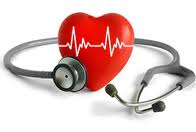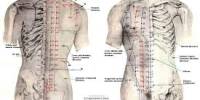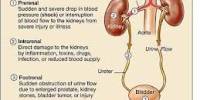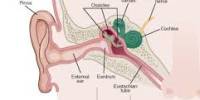A. INTRODUCTION
Cardihope Heart Centre is a triple storey building. It has been guarded by four security guards two at each gate. There is a garden in the clinic to give a soothing and refreshing feeling to its patients and visitors and to maintain it, two gardeners have been hired. There are six cleaners and eight ward boys who work on shifts at day and night.
They have seven different types of testing units that help to determine the nature of the disease and eleven different surgical units to cure these heart related diseases. Cardiac failure always needs urgent treatment therefore an emergency unit has also been developed with twenty four hours service to meet any emergency case. There exists a laboratory which examines blood, urine etc. and to manage it a laboratory in charge and a laboratory assistant are employed, whereas three laboratory technicians are also employed who carry out these tests. All this acquires the best of imported machineries and professionals to handle them the right way. An X-ray department has also been developed which is handled by three X-ray technicians and an in charge of the X-ray department.
The clinic has twelve doctors, four doctors with different specializations and a team of four cardiologists and four other doctors. Two doctors are always present at daytime and two at night duty, while other doctors have fixed timings that can be called on any time for emergency requirements. Fifteen nurses are employed to assist the doctors who also work in day and night shifts.
A highly qualified managing director has been appointed, under whose supervision all kinds of transactions take place. The official staffs include two receptionists, two cashiers, a manager, an accounts officer and two clerks.
Four ambulances are also part of Cardihopes property that can be called through telephone to meet emergency requirements and to drive them four drivers have been employed.
The clinic has set a charity fund department. This department donates the amount required for the treatment to those who cannot afford the expenses of the clinic.
The clinic has a cafeteria and a pharmacy; both of them are given on rent that in return pays them a fixed amount monthly.
B. DESCRIPTION OF THE EXISTING MANUAL SYSTEM
When a patient first comes in Cardihope he/she is received by a receptionist. If the patient has an appointment then he/she is simply guided to the doctor’s chamber and if he/she doesn’t have the appointment then either they are asked to wait in the waiting room for the doctor till he is free or given the appointment. The doctor writes a receipt for the patient after a regular check-up, which has to be produced by the patient at the reception for the payment.
If the patient has come in an emergency situation then he is quickly hurried to the ICU and all the doctors and nurses on duty are called. His/her heartbeat is monitored through ECG and some medicines are injected in his/her body to relieve his pain. Blood samples and urine samples are taken and sent to the laboratory for tests. If the condition is too critical and hard to handle then the senior doctors are also called and meanwhile the patients’ guardians are asked to fill the responsibility/emergency forms. All the details of the patient are written in the emergency forms. The patient is then admitted in the clinic for further tests and checkups, his information is then noted down in the WARD BOOK so that the visitors and doctors are easily guided to the patient. After the treatment is completed, the patient is given the bill and a case summary of his/her disease. Meanwhile all his expenses and treatment summaries are depicted in the TEMPORARY PATIENTS BOOK. The payment amount, disease details, case summary and a copy of the test reports are given to the patient for further reference and the CHARGES COLLECTION BOOK is used to record all the charges of the patients for e.g. the medicine, room charges, tests charges etc. that have been paid.
When the patient goes to the cashier for the payments, first of all his case summary, date of admission, date of discharge, medicines prescribed, doctor in charge and the total charges and mode of payment are noted down with a pen in the PATIENTS RECORD BOOK for later reference. When the patient has made the payment and leaves the counter the cashier copies the total charges into the DAILY INCOME BOOK. The EXPENDITURE RECORD BOOK carries all the minor and major details of the expenses of the clinic each day with the authorised signature, this book is very important to calculate the total income of the clinic in the end of the month.
The EMPLOYEES RECORD BOOK holds the profiles of each and every employee in the clinic such as doctors, guards, nurses, drivers, and assistants etc. a new entry is made in this book whenever a new person is employed. As different ranks of employees work with Cardihope salaries differ from person to person. Cardihope maintains a book attaining the salary information of all the employees in the SALARY RECORD BOOK. The part-time staffs is paid according to the hours they work and the full time staffs are paid on monthly basis and to record their presence a book called the ATTEDENCE RECORD BOOK has been issued.
All the payments from the patients, Cafeteria and Pharmacy are made to the cashiers who report daily to the Accounts Officer, who creates a monthly report in the end of the month and records the details in the MONTHLY INCOME BOOK.
The clinic owns a huge number of assets, most of which are imported from abroad. The information about them is written down in the ASSETS INFORMATION BOOK, and the associated receipts are stapled on the same page. There is a separate book to store the information about all the Suppliers such as chemicals, surgical equipments, assets etc. called the SUPPLIER INFORMATION BOOK.
A book called the RENT COLLECTION BOOK records the details of all the transactions with the cafeteria and pharmacy owners. As mentioned before they have to pay a fixed amount due monthly. The due date, the rent amount and every single related detail is depicted here.
There are many social workers in Bangladesh; who are engaged in helping the poor these people regularly donate money. Thus in order to hold their personal information a DONORS INFORMATION BOOK has been kept which records minor personal details about the donors e.g. the amount being donated, date of donation and all the other related details.
Of course the number of people who need donations is also very high, therefore a book namely DONATION INFORMATION BOOK is kept. This book records the names, financial information and minor details of patients who have taken financial help from the clinic.
It is a normal practice of all class of staffs of Cardihope to use a pen to note down all the days transactions in thick books. The title and the purpose of each book are as stated below:
Sl. No. | NAME | DESCRIPTION |
1. | Salary Record Book
| Various ranks of staff work with Cardihope and every category has different pay scales. This book records the monthly payment made to the staffs. |
2. | Employees Record Book | This book is maintained in order to record the details of the employees in the clinic. |
3. | Attendance Record Book | This record the presence, absence and hours worked by the staffs. |
4. | Expenditure Record Book | This book holds the record of daily expenses made each day for e.g. office stationary etc. |
5. | Assets Information Book | This record details of the assets present in the clinic, their brand, when they were bought, from which supplier etc. |
6. | Supplier Information Book | This book records the detail of suppliers that supply the assets for the entire clinic, chemicals for the laboratory, medicines, surgery equipments etc. |
7. | Patients Record Book | This book holds the case summary of the patients’ disease, the medicines prescribed, the doctors’ in-charge and the date of discharge from the clinic and also the amount charged in total. |
8. | Ward Book | The ward number, bed number, patient name etc. are recorded in this book. |
9. | Charges Collection Book | This record all the charges of the patients for e.g. the medicinal, room charges, tests charges etc. that have been paid. |
10. | Daily Income Book | This book holds the daily income made from each unit/department of the clinic. |
11. | Monthly Income Book | This report is maintained by the accounts officer of the clinic. It holds the summary of all the transactions been made through out the month. The gross and net amounts are labelled here. |
12. | Rent Collection Book | This book records the details of all the transactions with the cafeteria and pharmacy owners. As mentioned before they have to pay a fixed amount due monthly. |
14. | Temporary Patients Book
| All the information and costs of the patient from the time he/she enters the clinic until his/her discharge. |
15. | Donors information Book
| This book holds the information about the Donors, the amount being donated, date of donation and all the other related details. |
16. | Donations Record Book
| This book records the names and minor details of patients who have seek financial help from the clinic. |
C. PROBLEMS ENCOUNTERED IN THE EXISTING SYSTEM
Though the clinic is running successfully, the management found that preparing the invoice, registering the records in the book, calculating the payment of the patients manually is expensive, error prone and inefficient.
The problem is to computerise the following areas of the manual system:
- Transaction processing: When a patient pays the charges for his/her treatment, he/she receives a receipt mentioning the details about the payment. If this receipt production and pay calculation is computerised then the net charge of a customer can easily be found, chances of making error by the cashier or the Accountants Officer will be very less and the person would not have to wait for long to receive his/her receipt.
- Payroll: Part-time staffs receive their pay according to the number of hours they work. While the full-time staffs get their wages according to the time they arrive and depart the clinic. If this system is computerised, it will require less human interface then needed in the manual one.
- Accounts: A calculation having the total expenditure and income of a certain period is done to find the profit of that specific time, so that important business strategies can be implemented. At the end of the month, all sorts of expenses such as rents, bills, employees’ payments and so forth are studied, so that the monthly expense can be recorded. If this section is computerised the record can be easily entered, sorted and searched for later use.
D. INVESTIGATION CARRIED OUT
Interview with different people working at Cardihope Heart Centre
An interview with staffs to know all the systems carrying on within the clinic was prepared. The interview was with the managing director, accounts officer and different employees working in the clinic. Brochures and catalogues of Cardihope were collected way before the interview from the reception, over the basis of which the entire interview was planned and the report was made.
Preparing for the interview
I prepared myself for the interview. I thought out some points on which I would make the questions:
- Objective – Purpose of computerising the entire system.
- Problem – The problem or drawback from the current way of doing things.
- Input – Process of receiving payments from the patient after one has completed the treatment.
- Output – The method of handling the income and expenses and the receipt and report generated from these.
- Process – The method of handling the patients of the clinic who come for treatment. The process of Finance management system.
- Data – Process of storing the records and using them later. The amount of data to be dealt with. The data needed permanently and the data dealt temporarily.
- Exceptions – The methods of handling errors and exception.
- Security – The aspects of security issue.
Therefore, I had an interview and asked different questions about the way of tackling the system. The summary below describes the most important questions:
Transcript
Q: Hello Sir, How would you feel about having a computerised system of receiving the receipts, after you end up your treatment here? A: (A regular elderly patient). Well, that is very good news, I am not so much aware of computerised systems but I believe in perfection. If it can produce my receipts within a few seconds, then it’s great!
Q: What is the main problem you face working over here? A: (Cashier). As you can see I’m having a pen and a calculator in front of me, so you can really guess what problems I might have.
Q: Why are you interested in computerising your accounts department? A: (Managing Director). The clinic plans to serve the patients and employees better. So, computerising its accounts department will improve the quality of its work produced, making faster and efficient. That is actually the aim of our computerisation of the accounts department. All the calculation such as finding the net profit automatically calculated. Along with that we need the computer because it will list down all our equipments and belongings. This will keep us aware of them and we would be able to trace out if any thing is missing.
Q: What are the advantages of the current manual system? A: (Managing Director).The current manual system has been used in the same way from the beginning. The people working here are used to it and are fully responsible about there work.
Q: What are the disadvantages of this method? A: (Managing Director).This method involves a lot of paper work Mistakes are very common, if there is a single mistake other mistakes are likely to follow. The most important of all is time; this method requires a lot of time.
Q: So how does the clinic receive its payments? A: (Accounts officer). We receive the payments in cash and also by cheques. After getting the pay the receipt is issued and the account is updated in the DAILY INCOME BOOK. In this manner, the money is deposited in the clinics account.
Q: What are your fields of expenditure? A: (Accounts officer). The aim of our clinic is to provide friendly, hygienic and quality service to our patients and visitors, to do so the expenses include running costs such as stationeries, lighting, air-conditioning and so forth. There are also the costs of tax, house rent, maintenance of the assets and ambulances, salaries and other utility bills such as telephone, electricity, gas and water.
Q: Will you be comfortable with the computerised system instead of the existing manual system? A: (Accounts officer). Well, I am myself a computer freak, for the clinic I’ll initially resist the change, but later I am sure I’ll adjust to the new system. This new system will be helpful for everyone working within our premises.
Q: Don’t you feel the need of security, so that only selected people are allowed to view certain files? A: Oh yes of course! This is very important, because the information is strictly confidential.
E. FURTHER INVESTIGATION AND ANALYSIS
Questionnaires developed for Cardihope Management System
Questionnaires were used to gather the background information and to prove the need of computing system to replace the existing manual system. These questionnaires were produced in consultation with the Managing Director and the Accounts Officer during the interview. Questionnaires were distributed amongst all the doctors, technicians and some of the staff.
Questionnaire Results
Each questionnaire consisted of five questions. All together twenty-eight questionnaires were distributed, and twenty-five returned. In order to declare the response, the average of all the answers was taken out. The questionnaires consisted of multiple choice questions, where the person was supposed to choose the answer most logical to him. This score is shown on the bar chart below:
Analysis of the Interview
The interview that was carried out with the management gave a very clear indication that there are several problems with the present manual system.
The first point is that it requires a substantial amount of paper. Almost all the books need to be filled daily.
Although the books have clear and understandable format, changes are always being made.
The papers containing the employees, suppliers, patients’ information etc. can be lost. This would certainly cause problems.
The information is insecure as it can be open for others to view. A password system can be used, so that only the selected people can view the files.
The Managing Director was straight to the point that the current system is prone to mistakes. Although the mistakes are quickly noted and corrected but this is a wastage of time.
F. OBJECTIVES OF PROPOSED SYSTEM
Considering all the drawbacks of the current manual system and the facilities or advantages of using a computerised system. Therefore, a new system is to be designed. After analyzing the user requirements it can be concluded that the new system can be created either by using a database or spreadsheet package or software can be developed in a high level programming language. Both the advantages & disadvantages of using these two ways are summarised below
Using a package:
The system could be executed using a database or spreadsheet package such as EXCEL or ACCESS. Any one of this package has enough facilities to make the required program. The advantages of using such a package are:
Easy creation and maintenance of different files
Fast creation of customised input screens and report layouts
Quicker to develop the system because less programming effort is required
Easy to learn by any user with minimum computer literacy
Besides there are some drawbacks of using such a package:
The capabilities of designing things like menu are limited
The program cannot be exactly created to meet the requirements of the user
Very limited facilities for developing customise interface
The program cannot run in ‘Standalone Mode‘. It would always require the appropriate package to be run:
Using a programming language
Visual Basic is a practical alternative here since it is the only language available for the development of the system. It offers the following facilities:
Good random access files handling capabilities, which will enable fast access to any information. The developer does not need to be aware of specific database software, because VB supports lots of database format to be used at the back end.
Being a complete development tool, this language has got built-in compiler, interpreter and bug fixer.
Both the programming methods (Structured an Object Oriented Programming) are possible.
Less programming effort is required comparatively, as it is possible to work with lots of GUI based components such as Button or List Box and with built-in properties and functions of those.
Can be made perfect to suit the user requirements.
The program can be compiled and object code stored on disk so that it can be run on any PC without having to have any other software available.
Very user-friendly interface can be developed using various built-in tools. Sometimes this language is called front-end developers’ tools.Development of distributed system is possible using this language.
Using a Database Management Software for the development of the ‘Back End’
As the system is completely a database depended software, a database package is needed for the storage and retrieval of information. The complexity of this database package and its tasks are hidden to the user. After a thorough analysis it has been preferred to use Microsoft Access at the back end. This is because it also supports SQL (Structured Query Language) to retrieve information. It can handle with a huge amount of data. Good relation handling capabilities among several tables can be maintained by using this package. It is easy to enter, edit and view the information held here.
The current version of this package is MS Access which has been used for the development.
G. PROPOSED SYSTEM AND ITS ADVANTAGES
Although testing and implementation using a package would require considerably less programming effort, I feel that the finish product will have a more professional look if it is written in Visual Basic, and will be easier to use. Visual Basic has good facilities for creating a customised user interface with pop up windows for help messages and error messages including good debugging facilities too, and I intend to utilise these capabilities.
After choosing the means of creating the program, I am concerned about choosing the overall design of the system. The two possible ways of designing the system are summarised below:
Batch processing system: The patients would have an appropriate ID number, which would be unique for all. The records would be stored and later fetched using the appropriate ID; this ID would be noted on the receipt.
Each time a patient makes the payment, the amount would be written down in a file. At the end of the day this transaction file would be sorted by the respective code as the master file is also sorted in the same order. Thus this transaction file would be used to update the master file and the income file.
Similarly, a daily transaction file for daily expenditure would be maintained and used to update the Accounts file.
2. Real Time System: After the end of the day, the manager along with the doctors sits for a conference. They search the records for the closest surgeries to be performed. Providing appropriate dates makes this search. So, search has to be made anytime when required. Real Time System is required for this purpose.
In the interview the Managing Director stated that the books need to be updated very frequently. This means that a lot of repetitive work takes place. Researches
Study of the receipts
All information mentioned on the receipt is investigated and analysed. A copy of the receipt is printed below:
This receipt is given to the patient when the payment is made for the treatment
CARDIHOPE HEART CENTRE House#8, Road# 135, Gulshan#1 Tel: 605948, 605214, 988468 Receipt No. Unit: Clinic
Date……………… . Received with thanks a sum o f Tk………………………………………………………………………………. (Taka……………………………………………………………………………….…………………………)only from …………………………………………………………………………………………………………………… of………………………………………………………………………………………………………………………consulted by…………………………………………………………………………………………………………
For Cardihope Heart Centre N.B. This receipt is valid subject to realization of cheque |
| Authorised Signature | Total Tk. Report Received CASH RECEIVED BALANCE Tk. | Others | T.E.E Test | X-Ray | Publications/Medicines | B.P Monitoring | Ultra sonogram | Tran oesophageal Echocardiography | Stress Echocardiography | Color Doppler Echocardiography Echocardiography Echocardiography Echocardiography | Echocardiography | ECG | Holter Monitoring | ETT/Stress Test | Description | CARDIHOPE HEART CENTRE House#8, Road# 135, Gulshan#1 Tel: 605948, 605214, 988468
Name……………………………………………….No…………Refd.By…………………………………………….Date……..Address…………………………………………………………. | |||
Taka | |||||||||||||||||||
| Ps. | |||||||||||||||||||
The receipts are fully written manually. The calculations needed, are all done by using a calculator. The details of charges are recorded in the PATIENTS INFORMATION BOOK and then written down on the receipt. The customer has to wait until all the details are written down completely in the receipt.
H. ANALYSIS OF THE PROCESS OF UPDATING VARIOUS BOOKS
The process of updating various books was carefully investigated. When all the transactions are over the Accounts Officer updates the required books. The method of updating the various books is summarised below:
THE SALARY RECORD BOOK: This book is updated at the end of every month, when the payment is made to the employees. The total salary given to the staff is then posted to the Expenditure Book.
STAFF’S RECORD BOOK: This book is required for obtaining the personal details of the employees when necessary. This book is updated when new staffs join the clinic.
ASSETS INFORMATION BOOK: This book is updated whenever new assets are bought by the clinic.
PATIENTS INFORMATION BOOK: This book is updated whenever a patient comes to the reception after the treatment for the payment.
DAILY INCOME BOOK: This Income Book is updated daily after all transactions are over and the office is about to end.
EXPENDITURE BOOK: Whenever any expense takes place the record of that expense is written in the book at that very time. The record consists of the costs and amount of expenditure. An expense updates this book with new records.
I. THE NEED FOR A COMPTUER-BASED SOLUTION
The current manual system is described and analysed in the earlier sections. From the descriptions being given it is clear that many problems are associated with the manual system. It is:
- slow
- tiresome
- error prone
- time-consuming
- unreliable
- inefficient
Thus the authority of the clinic prefers the computer system to overcome the above mentioned problems which are still done manually, and to fully automate the sub-systems present in the manual system. The computer programme designed to tackle this system is expected to save up a lot of time and effort. The computerised system must be very reliable and should be error-free so that the authority finds it profitable using the computer system than to employ more staffs.
Some of the other requirements for a computer-based solution are outlined below:
Searching a specific patient consumes a lot of time and efforts as the data is recorded in an unsorted manner in the book. There is no appropriate way to search for a patient’s information when required. A computer-based system is the only solution to this problem.
Viewing any record gets very tough e.g. while if someone wants to view a staff record that person needs to go through the entire book. The computer-based programme is required to make this viewing process very simple, usually by a single click.
While updating any record the existing data is marked, crossed with pen and overwritten with the new data. The situation gets too much laborious when considering fitting the data into a limited space; this makes the data sometimes impossible to read. The computer based solution is required in order to edit or update any data without making it impossible for the user to read.
Specification of the Required System
J. THE CRITERIA FOR SUCCESS
General Specifications:
The software needs to be very much accurate in order to process the transactions. It should be very efficient in calculating. This will replace the Staffs’ Information Book.
The software should keep the purchase records of all the assets with date of purchase and its details.
The software should be able to maintain income record expenditure of the clinic with appropriate description and causes, so that a report can be generated at the end of the month for account.
The program should be designed to generate receipts for the customers.
The program should be able to maintain the salary given to each staff. So that it can be viewed later.
The software should be able to maintain the record of each and every expense made on any particular day.
The software should be able to produce a summary of the net income made from the clinic and later the same figure could be used to get the monthly summary report.
The software should have appropriate ways to search for any record when needed.
The software should have a very user-friendly interface so that anyone can get adjusted with the new system like a menu driven or graphical user.
Specific Specification
The software should be able to produce a certain unique identification number for each of the patients. This number would be different for each patient so that later the information can be viewed from that code.
The files used in the programme should have add, view, edit, delete and search facilities associated with them.
The program must be able to compare a certain input, validated and converted to the correct format. It must trap any kind of errors made by user and display message to them.
Purchase record that is the detail of the equipments bought within the current month. The details must contain the name, description of the assets, cost price etc.
It should also keep track of monthly expenses like employees, payments, monthly utility bills, and other expenses.
Reports should be taken daily about patients and employees.
















